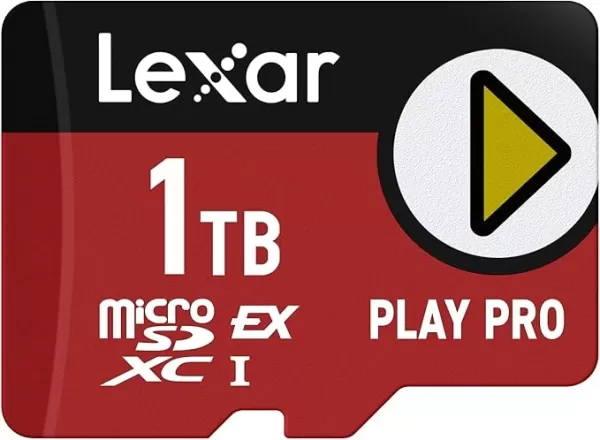Last week, Nintendo unveiled the Nintendo Switch 2, stirring excitement across the gaming community. A notable feature of the new console is its exclusive support for MicroSD Express cards for expansion. This might be a hurdle for those with existing collections of standard MicroSD cards, but it's a strategic move given the superior speed of MicroSD Express.
The primary advantage of MicroSD Express cards lies in their interface, which enables them to achieve read/write speeds comparable to the Universal Flash Storage (UFS) used in the Switch 2's internal storage. This means that games on expansion cards can theoretically load just as quickly as those stored internally, enhancing the overall gaming experience. However, this comes at the cost of not being able to utilize less expensive, non-Express MicroSD cards.
MicroSD vs. MicroSD Express
The evolution of SD card speed ratings has been significant. Initially, SD cards offered speeds of just 12.5MB/s, which is slow by today's standards. Over time, advancements led to the SD High Speed at 25MB/s, culminating in the SD UHS III (Ultra High Speed) at 312MB/s. The introduction of the SD Express standard five years ago marked a substantial leap in performance.
The key difference with SD Express is its use of a PCIe 3.1 interface, a significant upgrade from the slower UHS-I interface. This PCIe interface, also used by high-speed NVMe SSDs, allows for much higher data transfer rates. Full-sized SD Express cards can reach speeds up to 3,940MB/s, far surpassing older SD cards.
While MicroSD Express cards don't match the top speeds of their full-sized counterparts, they still offer impressive performance, reaching up to 985MB/s—three times faster than the fastest non-Express MicroSD cards.
Why Does the Switch 2 Require MicroSD Express?
Nintendo's decision to require MicroSD Express cards for the Switch 2 is likely driven by the need for speed. Games installed on a MicroSD Express card will load significantly faster than those on a traditional UHS-I MicroSD card, thanks to the PCIe 3.1 interface. This requirement could set a precedent for future handheld gaming PCs.
The Switch 2's internal storage has been upgraded to UFS from eMMC, aligning with the need for faster external storage. Early demos suggest that load times for games like Breath of the Wild have improved dramatically, with fast travel times reduced by 35% according to Polygon, and initial load times improved by a factor of three as reported by Digital Foundry. These improvements could be attributed to the faster internal storage, but also to enhanced CPU and GPU capabilities. The necessity for external storage to match these speeds ensures that future games requiring faster disk access won't be hindered by slower SD cards.
Moreover, this move future-proofs the console, allowing for even faster storage solutions as technology advances. The current fastest standard for SD cards, SD 8.0 Specification, supports speeds up to 3,942MB/s for full-size SD Express cards. While MicroSD Express cards can't yet reach these speeds, future developments could see them doing so, provided the Switch 2 supports such speeds.
AnswerSee ResultsMicroSD Express Capacity Options
Currently, MicroSD Express cards are not widely available, but this is expected to change with the launch of the Nintendo Switch 2. Lexar offers a single MicroSD Express card in 256GB, 512GB, and 1TB capacities, with the 1TB variant priced at $199.

Lexar Play Pro MicroSD Express
0See it at AmazonSanDisk, on the other hand, offers a MicroSD Express card with a maximum capacity of 256GB, matching the internal storage of the Switch 2. As the Switch 2 hits the market, we can expect more options to emerge, particularly from companies like Samsung, which are likely to increase production of these high-speed memory cards.










